A Great British Coastal Liner Empire
Part Two – 1939-1971
![]()
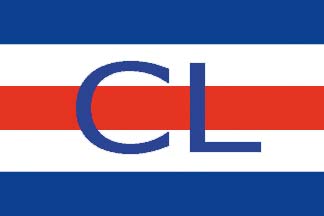 The big Coast Lines fleet of 86 vessels suffered heavy losses and many crippled and badly damaged casualties during the six years of war. Twenty two ships were sunk, over a quarter of the fleet, with many more damaged by mines, bombs and torpedoes that took many months or even years to repair in some cases. The enormous contribution of the eight modern, twin screw Irish Sea passenger motorships to the tide of war in operations across the Mediterranean and Indian Ocean will be given in Part III of this series of articles. The cargo ships employed on British coastal convoys were requisitioned for action not just around Britain, but also on the Norwegian expedition of 1940, withdrawal at Dunkirk shortly afterwards, in Greece and other Mediterranean campaigns, and the successful landings in North Africa, Italy and Normandy. Ayrshire Coast was requisitioned as early as February 1939, and by the outbreak or shortly afterwards Western Coast, Cambrian Coast, Clyde Coast, Devon Coast, Dorset Coast, Pembroke Coast, Pacific Coast, Anglian Coast, British Coast and Atlantic Coast had been requisitioned.
The big Coast Lines fleet of 86 vessels suffered heavy losses and many crippled and badly damaged casualties during the six years of war. Twenty two ships were sunk, over a quarter of the fleet, with many more damaged by mines, bombs and torpedoes that took many months or even years to repair in some cases. The enormous contribution of the eight modern, twin screw Irish Sea passenger motorships to the tide of war in operations across the Mediterranean and Indian Ocean will be given in Part III of this series of articles. The cargo ships employed on British coastal convoys were requisitioned for action not just around Britain, but also on the Norwegian expedition of 1940, withdrawal at Dunkirk shortly afterwards, in Greece and other Mediterranean campaigns, and the successful landings in North Africa, Italy and Normandy. Ayrshire Coast was requisitioned as early as February 1939, and by the outbreak or shortly afterwards Western Coast, Cambrian Coast, Clyde Coast, Devon Coast, Dorset Coast, Pembroke Coast, Pacific Coast, Anglian Coast, British Coast and Atlantic Coast had been requisitioned.
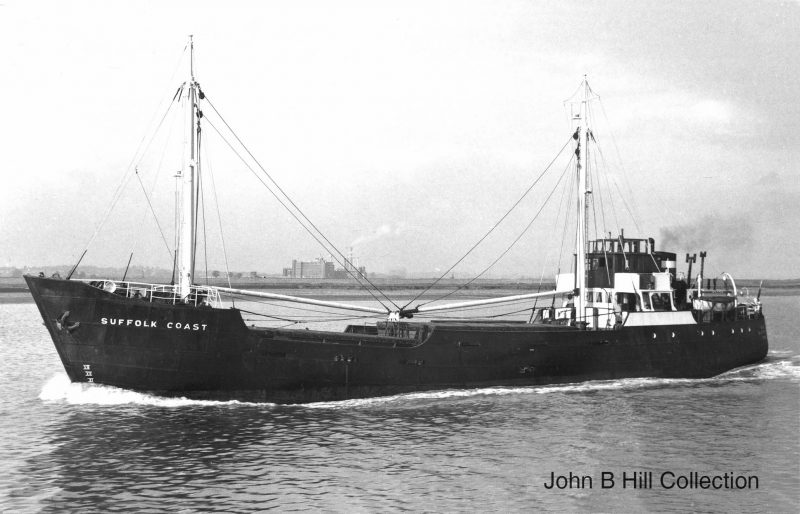
Suffolk Coast was requisitioned on 22nd November 1939, the day she had been purchased from the Marali British Shipping Co. Ltd. as the motor coaster Marali. Ocean Coast was then requisitioned shortly afterwards, followed by Killarney in April 1940 for the evacuation of British Expeditionary Force troops from Dunkirk. The entire Coast Lines fleet had been requisitioned by the end of 1940, by which time coastal convoys through the Dover Straits, the so called ‘coal scuttle brigade’, had been abandoned due to heavy losses from aerial attack and by long range bombardment. The first two losses were suffered on the same day of 9th November 1939 at Brest and off Seaham Harbour, and the full list of losses is now given:-
- Pacific Coast lost by explosion on 9.11.1939 at Brest while carrying cased petrol for British forces.
- Carmarthen Coast mined and sunk three miles off Seaham on 9.11.1939 while on a voyage from Methil to London with general cargo, two lost.
- Munster mined and sunk ten miles west of Formby on 7.2.1940 while on a voyage from Belfast to Liverpool with passengers and cargo, all saved.
- Pembroke Coast bombed in Harstad harbour on 20.5.1940 having arrived from Avonmouth with Army stores, later sunk by H. M. forces.
- Island Queen bombed and sunk 0.5 miles from Folkestone L.V. on 14.7.1940 while on a voyage from Blyth to Cowes with coal, three lost.
- Fife Coast torpedoed and sunk by E boat 15 miles west of Beachy Head on 8.8.1940 while on a voyage from London to Plymouth and Falmouth with sugar, five lost.
- Meath mined and sunk off Breamer Rock L.H. on 16.8.1940 while on a voyage from Dublin to Birkenhead with cattle and sheep.
- Lairdscastle sunk by collision with Vernon City of Reardon Smith Line on 4.9.1940 between the Mull of Kintyre and Ailsa Craig while on a voyage from Glasgow to Belfast with general cargo.
- Jersey Queen mined and sunk 1.5 miles from St. Anthony Head on 6.10.1940 while on a voyage from Blyth to Plymouth with coal.
- Alderney Queen bombed and sunk to west of Skomer Island, Pembroke on 9.10.1940 while on a voyage from Blyth to Plymouth with coal.
- Ardmore sailed from Cork on 11.11.1940 for Fishguard and disappeared in the middle of St. George’s Channel.
- Innisfallen mined and sunk off Canada Dock entrance in the Mersey on 21.12.1940 while on a voyage from Liverpool to Dublin, all 148 passengers saved but four crew lost.
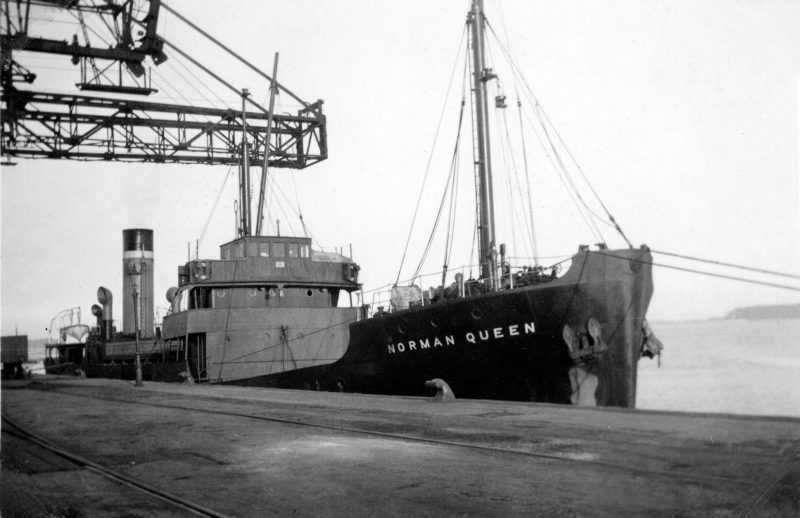
- Norman Queen torpedoed and sunk by E boat one mile west of South Haisbro buoy on 8.3.1941 while on a voyage from London to Boston with timber.
- Ulster Prince bombed at Nauplia on 26.4.1941 while aground and abandoned during the evacuation of Greece. She was acting as a Brigade stores and transport carrier.
- Dorset Coast bombed and capsized on her side at Algiers on 12.5.1943.
- Foam Queen torpedoed by E boat off Hastings on 2.11.1943 while on a voyage from Goole to Poole with coal. Her stern was blown off, the wreck was towed to Dover where her coal was discharged. Later used for experimental purposes.
- Devon Coast lost at Bari by air attack on 2.12.1943 while loaded with high octane fuel, one lost.
- Kerry Coast sunk by collision in the Mersey on 11.3.1944 while on a voyage from Ireland, later raised and sold.
- Guernsey Queen mined at the entrance to Boulogne on 21.10.1944, later towed to Grangemouth for fitting of a new bow.
- Normandy Coast torpedoed and sunk off Holyhead on 11.1.1945 while on a voyage from London to Liverpool with steel plates, 19 lost.
- Norfolk Coast torpedoed and sunk to west of St. David’s Head, Pembroke on 28.2.1945 while on a voyage from Cardiff to Liverpool with general cargo, seven lost.
- Monmouth Coast torpedoed and sunk 80 miles from Sligo on 24.4.1945 while on a voyage from Sligo to Liverpool with barites, 16 crew lost.
In addition to this long list of ships lost, Anglian Coast was badly damaged by mine on 4th March 1941 when two cables from the Bar light vessel in the Mersey entrance, but was repaired. Brittany Coast was badly damaged in the same Bari explosion on 2nd December 1943 that sank her newer consort Devon Coast. Dorset Coast was mined in the Bristol Channel on 9th January 1941, only to be repaired and lost at Algiers. However, she was later raised and had a long second career under foreign flags. Several coasters were bombed and machine gunned during 1940 but survived, including Jersey Queen off Cromer, Hampshire Coast six miles SW of St. Ann’s Light, Northern Coast twice off the north coast of Scotland, and Saxon Queen near the Sunk Head buoy in the Thames estuary. The Dutch built motor coaster Emerald Queen was heavily damaged by bombing off Redcar on 17th March 1941 in German attacks on Tees Bay.
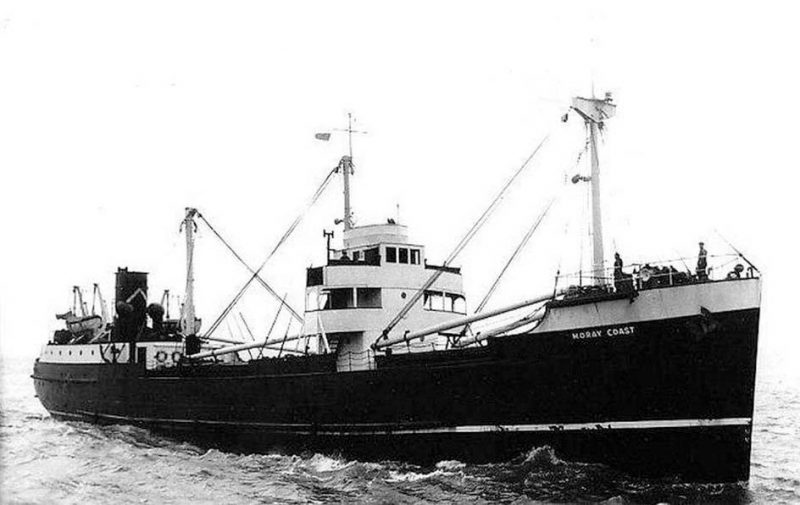
Many company staff, both ashore and afloat, were decorated for bravery, with long service medals and war honours. Liverpool was heavily bombed on many occasions during the war, but the company office staff unfailingly continued to report for work at Cunard Building. Coastal companies taken over during the war included A. Coker & Co. Ltd. in 1943, Liverpool shipowners and agents. Robert Gilchrist & Co. Ltd. (formed 1824) was taken over in 1943 with four coasters Portia, Fire Queen, Perdita and Victor on services to the Clyde and the Bristol Channel from Liverpool. The Tyne-Tees Steam Shipping Co. Ltd. was taken over in 1943 for £1.227 million, and had been formed in 1904 by the merger of the Tyne Steam Shipping Co. Ltd., Tees Union Steamship Co. Ltd., Free Trade Wharf Co. Ltd., and the coastal interests of Furness, Withy & Co. Ltd. The Belfast, Mersey and Manchester Steamship Co. Ltd. was taken over in 1945 for £200,000, together with the joint managing owners Samuel Lawther & Sons Ltd. of Belfast and John J. Mack & Sons Ltd. of Liverpool. Three cattle and cargo coasters and their trades were later merged into the Belfast Steamship Co. Ltd. in 1960.
Post-War Rebuilding
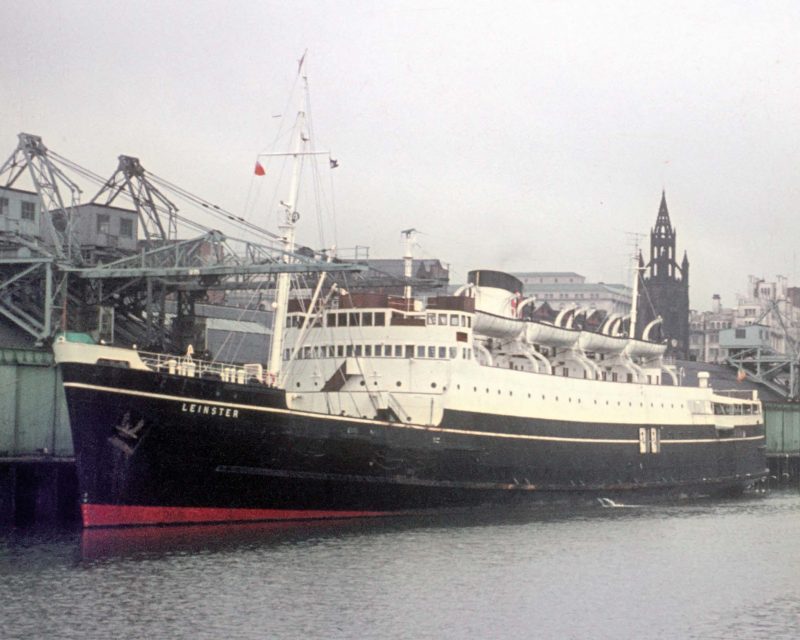
New coasters completed during the war years for Coast Lines from their Ardrossan shipyard included Moray Coast in 1940, and Southern Coast in 1943. The British Channel Islands Shipping Co. Ltd. fleet could not of course trade to their home islands during the war because of their occupation by German forces, but their yellow funnels with a black top and central blue band were repainted later in 1945 to restart services. The war built Windsor Queen, Norman Queen, Highland Queen and Balmoral Queen began peacetime trading to the islands, as well as the purchased Roman Queen ex Empire Drover purchased in 1946.
The main Irish Sea passenger and cargo services had to be quickly reorganised and started at the end of the war. Leinster of B. & I. was transferred to the Belfast Steamship Co. Ltd. to form a two passenger ship fleet with the surviving Ulster Monarch on the Belfast to Liverpool service, and was renamed Ulster Prince. Three new passenger motor vessels were then ordered for delivery in 1948, with Innisfallen from the Denny yard for the Fishguard to Cork service, and Leinster and Munster from Harland & Wolff Ltd. for the Liverpool to Dublin service, all of the trio had accommodation for one thousand passengers, with Leinster and Munster also carrying large numbers of cattle on their lower decks.
The Aberdeen Steam Navigation Co. Ltd., formed in 1821 with their first steamer built in 1828 and company incorporation in 1918, was taken over in 1946. Small parcels of shares had been purchased in this company throughout the war from 1939, with the remainder purchased by the Tyne-Tees Steam Shipping Co. Ltd. in 1946 and thus passing into control of the Group. The Zillah Shipping Co. Ltd. of Liverpool was taken over in 1949 for £450,000 and was managed by William A. Savage Ltd., with the company name derived from the wife of the founder, Priscilla. The Zillah fleet was increased during Coast Lines ownership with a fleet of fourteen motor coasters owned in 1960, and then decreased in size to nine coasters in 1965 with the last three, Fallowfield, Grangefield and Fernfield, transferred to Coast Lines in 1967.
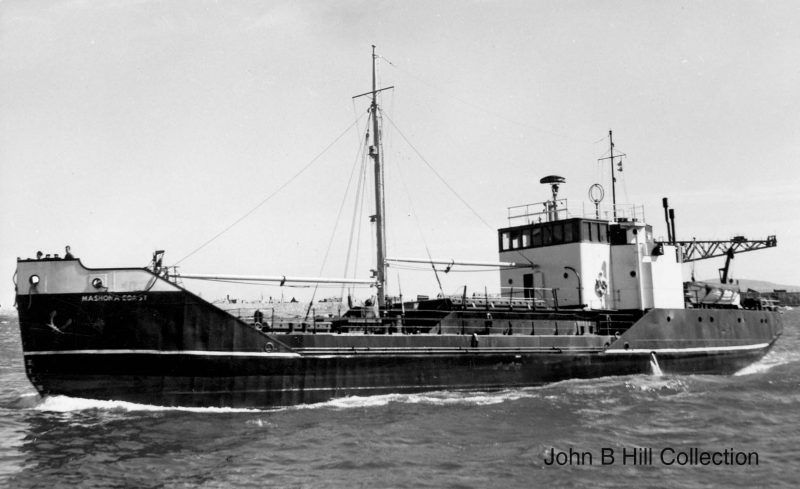
Coast Lines Africa (Pty) Ltd.
This subsidiary was formed in 1949, and was developed into a very useful Cape Town to Durban trade, and a west coast trade up to the Congo, with the larger coaster Baltic Coast of 2,500 dwt, completed in 1948 at the Ardrossan Dockyard Ltd., sent out to South Africa on charter for the Congo trade, and in 1951 she was renamed Cape Coast. In 1951, two further coasters were sent out to South Africa, Carrick Coast and Dorset Coast, renamed to the more suitable Zulu Coast and Matabele Coast and fitted with new accommodation for tropical climates. Two further Coast Lines vessels were sent out a year later on charter and again were given South African names, with other coasters renamed from Mashona to Mashona Coast, Ovambo to Ovambo Coast, Namaqua to Maqua Coast, and Swazi to Swazi Coast.
The local Thesen’s Steamship Co. Ltd. was the vehicle chosen for this venture, with a 45% shareholding taken in 1949 for £55,000. The 55% balance in Thesen’s was held by Mitchell Cotts & Co. Ltd. Two Thesen brothers from Norway had called in at Cape Town in 1869 to repair their storm ravaged schooner, and as with many others, had decided to stay on and settle there amidst the spectacular scenery. Their two ship coaster fleet in 1921 was taken over by Sir Robert Houston, whose large South African trading fleet had only recently been taken over by Sir Charles Cayzer and The Clan Line Steamers Ltd. The fleet grew to eight ships in 1930, and six years later was taken over by Mitchell, Cotts & Co. Ltd. William Mitchell Cotts was a Scotsman who went out to South Africa in the previous century and established the Natal Collieries, which needed a good supply of pitprops, with Baltic timber then imported in tramps owned by his Sun Shipping Co. Ltd.
Coast Lines director A. A. Lough made a four month visit to South Africa in 1949, at the same time as Thesen’s had acquired all of the share capital of the Union Steamship Company of South Africa for £70,000. Coast Lines Africa (Pty) Ltd. continued trading in the region until November 1966 after a 80% controlling interest was taken in Thesen’s in December 1952. Ovambo Coast and Swazi Coast were both lost in 1958 to marine causes. Xhosa Coast was one replacement, and two new coasters were ordered from British yards, in a new Swazi Coast from Cleland’s yard on the Tyne in 1963, and Zulu Coast from the Ardrossan Dockyard in 1957. The Hawthorndene Hotel in Cape Town was acquired for £38,000 for passengers to break their journeys on Coast Lines ships.
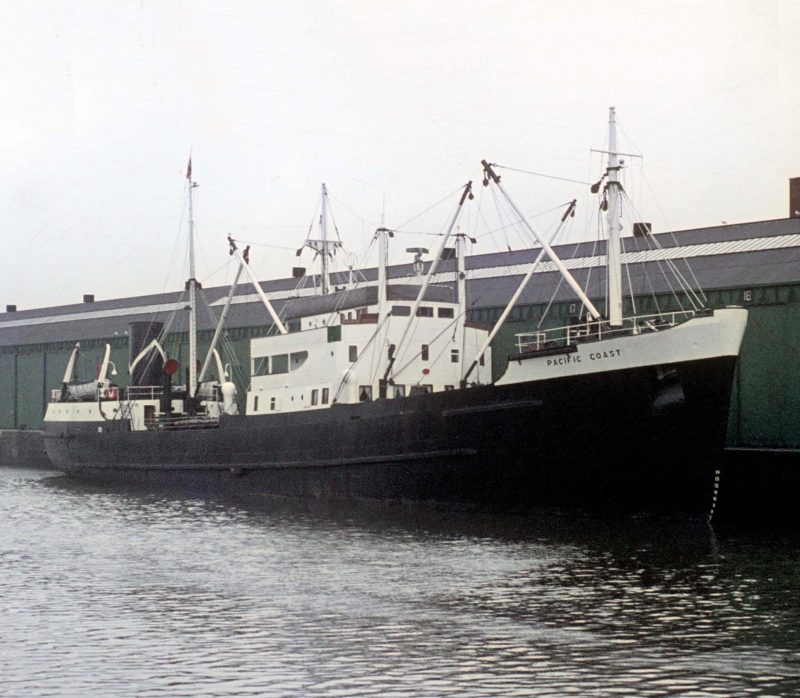
Tyne-Tees Steam Shipping Co. Ltd.
This acquisition gave the predominantly Irish Sea based Coast Lines full expansion into the Continental services. This famous East Coast fleet with black funnels and central red and white bands had been formed in 1904 by a merger of four East Coast companies. A booming passenger service from the Tyne to London was acquired at that time, with coastal liners such as New Londoner of 1894, and later the greater capacity of the newer Stephen Furness of 1910 with accommodation for 250 First Class and 120 Second Class passengers. The inter-war ‘crack’ express coastal liners of Hadrian and Bernicia in 1923 had accommodation for 136 First Class and one hundred Second Class passengers were the favourite ships on the Tyne to Thames run. My mother, Hilda, was a frequent passenger on this express pair in the years before they were sold off in 1932/33 due to the Depression and the advent of the motor coach as well as cheaper rail services.
A dozen coasters were taken over in 1943, and in 1946 the local Northumbrian names e.g. Cragside, Lowick and Beal were replaced with ‘Coast’ names, but as a point of distinction all of the first words ended in ‘ian’ e.g. Iberian Coast, Sylvian Coast, Cyprian Coast etc. The strongly built Thornaby of 1,174 grt from the Hawthorn, Leslie yard at Hebburn on Tyne in 1935 was in collision with and sank a war built deep sea tramp of 10,000 dwt on 1st February 1946. The tough stem of Thornaby ploughed into the side of Fort Massac ten miles ESE of Harwich, with the deep sea tramp coming off second best. Thornaby was repaired and renamed Northumbrian Coast, and because of her bigger size was employed in the coal southwards and silver sand northwards trade.
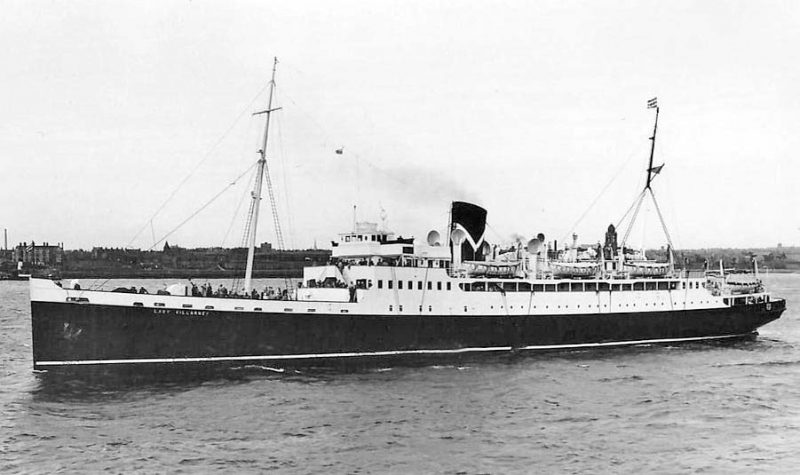
In 1953, a new shed was built at Gateshead at a cost of £11,000 beneath the famous symmetrical arch of the Tyne Bridge to give company berths on both sides of the river at Newcastle. Services were maintained to Germany, Holland, Belgium, North French ports and the Channel Islands from Newcastle and Middlesbrough as well as a Tyne to London cargo service. These ran until the vast majority of the fleet was sold off in 1968, with a two ship operation in Yorkshire Coast of 1959 and Stormont of 1954 until 1972, and a one ship operation by Stormont until 1976. Yorkshire Coast of 785 grt was a favourite coaster of mine from the George Brown & Company (Marine) yard at Greenock in 1959, equipped with two derricks, one on the foremast and another in front of the bridge with its winch mounted on a small platform at the base of a goalpost mast. I saw her probably more often than any other coaster in the fleet, during my regular travels on ferries and day cruises up and down the Tyne.
Liverpool To London Passenger Service
Two new passenger and cargo coasters were ordered in 1946 by the Aberdeen Steam Navigation Co. Ltd. from the Hall, Russell yard at Aberdeen for their Aberdeen to London service. They were completed in 1947/48 with buff funnels bearing a green central band as Aberdonian Coast and Caledonian Coast, but within a year due to financial losses had been moved to the more profitable Liverpool to London passenger service. Aberdonian Coast was renamed Hibernian Coast, and both served on this route for twenty years. They left Liverpool every Friday afternoon or Saturday morning for London with calls at Falmouth, Plymouth or Southampton if cargo offered, arriving in the Thames on Tuesday or Wednesday. The return voyage from the East India Dock in London called at Cork and Dublin, and in good weather in summer made an ideal ten day cruise. Capt. J. Webber, Master of Caledonian Coast, was later awarded the OBE for his long service on the route. The pre-war British Coast, Ocean Coast and Atlantic Coast also operated on this route until 1962, calling at Falmouth southbound, and had been joined in 1947 by a new Pacific Coast as a war loss replacement for a ship of the same name. The Liverpool to London passenger service was finally abandoned in 1968 after lasting for well over one hundred years.
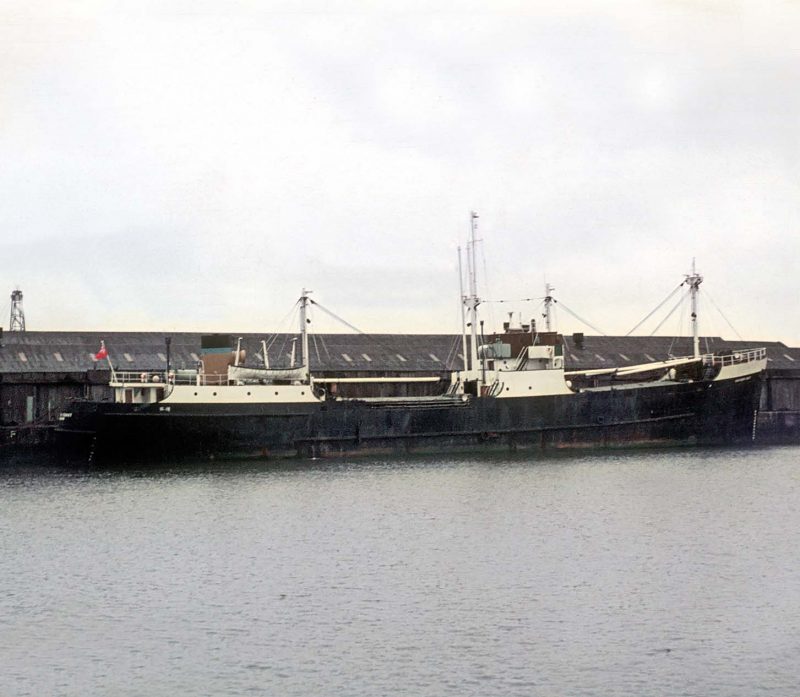
Coastal Cruising
Deep sea cruising from British ports could not recommence after the war until the great liners of P. & O., Orient Line and Cunard Line and others had undergone major overhauls after strenuous wartime trooping service, with refits lasting in some cases until 1950. However, one Coast Lines ship ran Hebridean and West coast of Scotland cruises from Liverpool from 20th June 1947. This was Lady Killarney of 3,222 grt, built back in 1911 as the single red and black funnelled Patriotic by Harland & Wolff Ltd. for the Belfast Steamship Co. Ltd. for service between Belfast and Liverpool. Coast Lines had run these cruises from Liverpool in the 1930s using Killarney, which had been sold to Greek owners after strenuous war service. Lady Killarney had lost her second dummy funnel, gained during a 1930 refit, during her war service, and internal changes were made in her conversion to a cruising ship. She continued with her popular West Scotland cruises until the end of the 1956 cruising season when financial losses had been made. She was then laid up at Birkenhead and scrapped at Port Glasgow at the end of 1956.
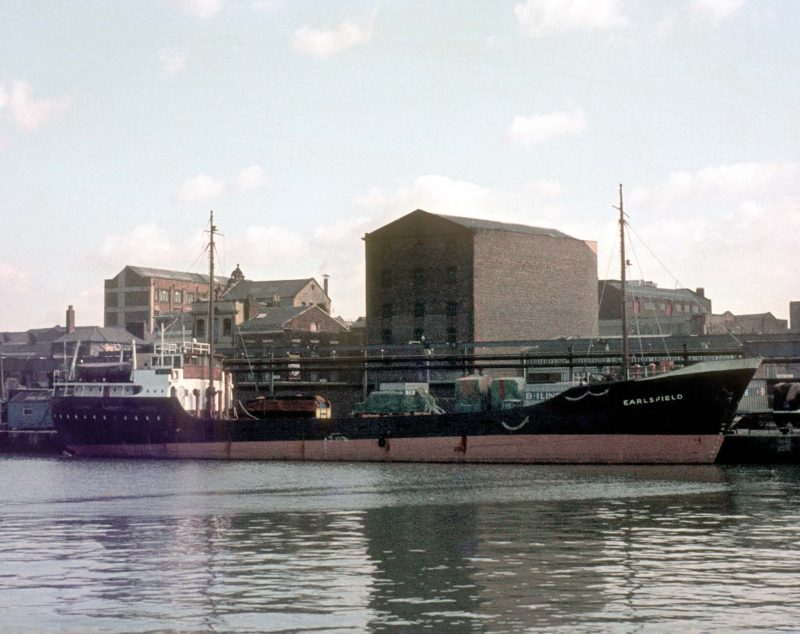
British Channel Islands Shipping Co. Ltd.
Guernsey and Jersey were recovered in May 1945, but although Alderney was also recovered it had been very badly damaged by German troops, and only some of the local population began returning in 1950 to rebuild their homes and reoccupy the island after their evacuation in 1940. An application was made in 1946 to the Governor of Guernsey for a monopoly of a service between Guernsey, Herm and Sark by the British Channel Islands Shipping Co. Ltd. This was accepted but without any financial support or guarantee. In 1947, a subsidiary company, Islands Shipping Co. Ltd., was established to run these passenger and cargo services. The former Morecambe Bay excursion ship Robina, and a converted landing craft renamed Sark Coast, as well as the wooden Herm Coast of 123 grt were used on this service which ended in 1952. A five year agreement was also entered into with the Vectis Shipping Co. Ltd. from June 1947 for the carriage of goods between Southampton, Portsmouth and the Isle of Wight.

The British Channel Islands Shipping Co. Ltd. had separated off its tramping activities in 1943 as British Channel Traders Ltd., which was renamed as Queenship Navigation Ltd. on 22nd March 1947 with a capital of £550,000 in £1 shares. A dozen coasters in 1948 all had the characteristic ‘Queen’ suffix to their names and wore yellow funnels with a black top separated by a narrow red band. Richmond Queen joined the fleet in 1949 and was an interesting ship as she was the former Maurice Rose built in 1930 for Hughes Holden Shipping Ltd. She was sold in 1947 to the Tyne-Tees Steam Shipping Co. Ltd. along with Dennis Rose and Dorothy Rose. Tyne-Tees kept the latter pair but transferred Maurice Rose to A. Coker & Co. Ltd., a Group member, and renamed her Baltic King and then transferred her to Queenship Navigation Ltd.
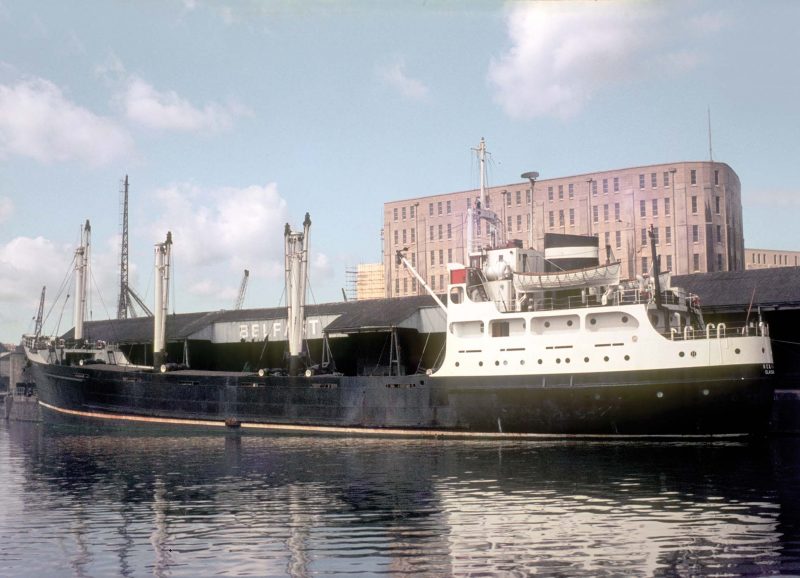
The only other Coker coaster was Baltic Queen, but she was lost in the Mersey on 24th February 1948 in a collision. A. Coker & Co. Ltd. took over the management of two purchased standard war built American coasters in 1949, one of which was renamed as Baltic Queen. The new Coast Lines vessel Baltic Coast of 2,500 dwt was originally intended for the Coker fleet, but instead went out to the Coast Lines subsidiary in Cape Town as Cape Coast. A. Coker & Co. Ltd. was then disposed of in 1951 to its three directors for £12,000 plus a promise not to compete with Coast Lines for ten years.
Zillah Shipping Co. Ltd.
This Liverpool coastal tramping company was taken over in 1949 with their trades of coal from the Mersey to Ireland and roadstone from the Penmaenmawr quarries near Conway in North Wales. A fleet of fifteen elderly steam coasters, some of forty years of age, was replaced with modern motor coasters from 1954. Their original yellow funnel colours with a black top were retained on these new Dutch built motor coasters, including Foxfield, Oatfield, Freshfield, Fallowfield, Greenfield, Grangefield, Brentfield, Birchfield, Edgefield, Earlsfield, Holmfield, Fernfield, Glenfield, Garthfield and Fordfield. Glenfield and Garthfield were the exception and were transfers from Queenship Navigation Ltd., the other Coast Lines coastal tramping fleet, or Burns and Laird Lines Ltd. The North Wales stone trade began to slow down in the late 1950s, and these motor coasters then loaded only an occasional cargo at Penmaenmawr quarries, as the mine owners took lower freight rates from other coastal tramping companies.
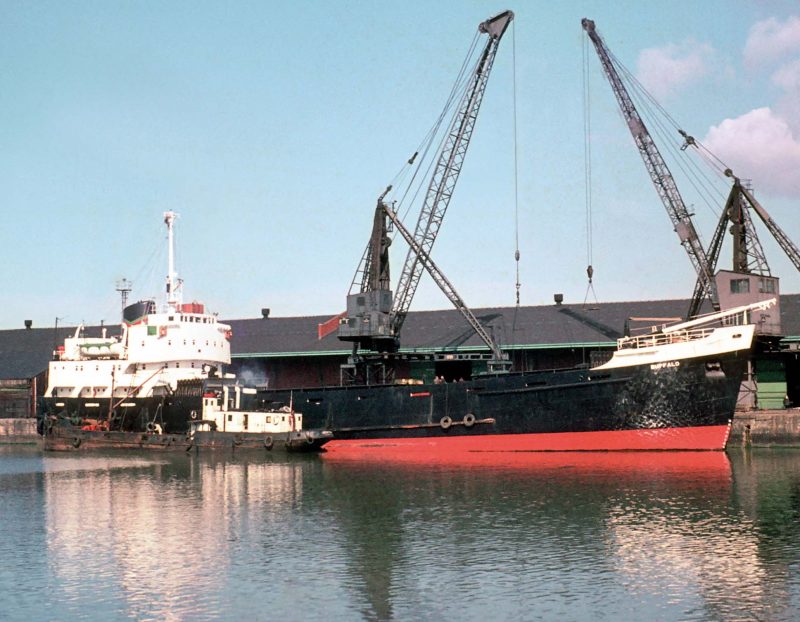
A Modern Motor Coaster Fleet
The conversion of the main Coast Lines coastal liner fleet to motor propulsion was mostly complete by 1950, with only four out of thirty black funnelled coasters with white chevrons still using steam machinery. These were the Clyde built sisters Eastern Coast and Northern Coast of 1921/22, the war built Hampshire Coast of 1941, and the mini cruise liner Lady Killarney of 1911. The latter ship continued in service until 1956, and Hampshire Coast was transferred to the Tyne-Tees fleet in 1952, and the elderly Clyde built sisters were disposed of in 1954. The fleet now used different Liverpool docks, with the London coastal passenger ships using West Bramley Moore Dock, and the others using Waterloo Dock, Trafalgar Dock and Nelson Dock.
Sir Alfred Read, founder of Coast Lines, retired on 20th December 1949 after a magnificent 37 years with the company, either as Chairman or Managing Director. The Board of directors placed on record their physical and spiritual loss at his departure, and their sincere appreciation of what he had achieved since setting up the company in 1913. He was succeeded as Chairman by Capt. Stansmore Nutting OBE, and later by Arnet Robinson (knighted in 1963) in March 1964.
A second fleet replacement programme began in 1953, with seven coastal liners costing £1.75 million for delivery up to 1957. These joined the fleet as Herero Coast (purchased for Thesen’s), Western Coast, the sisters Cheshire Coast and Lancashire Coast, Fife Coast, Essex Coast and Cambrian Coast. A new coastal tramp of 1,710 dwt was ordered for Queenship Navigation Ltd. from Goole Shipbuilding & Engineering Co. Ltd. costing £170,500 for delivery in 1955 as Sandringham Queen. Two new coasters were completed for the Belfast Steamship Co. Ltd. at Clyde yards in 1955 as Ulster Pioneer and Ulster Premier, the latter being launched by Viscountess Brookeborough on 26th April 1955. Somerset Coast was completed by Cleland’s at Wallsend on Tyne at a cost of £227,500, having originally been ordered as Somersetbrook for Comben Longstaff & Co. Ltd., but was transferred to Queenship Navigation Ltd. a year later and renamed Richmond Queen.
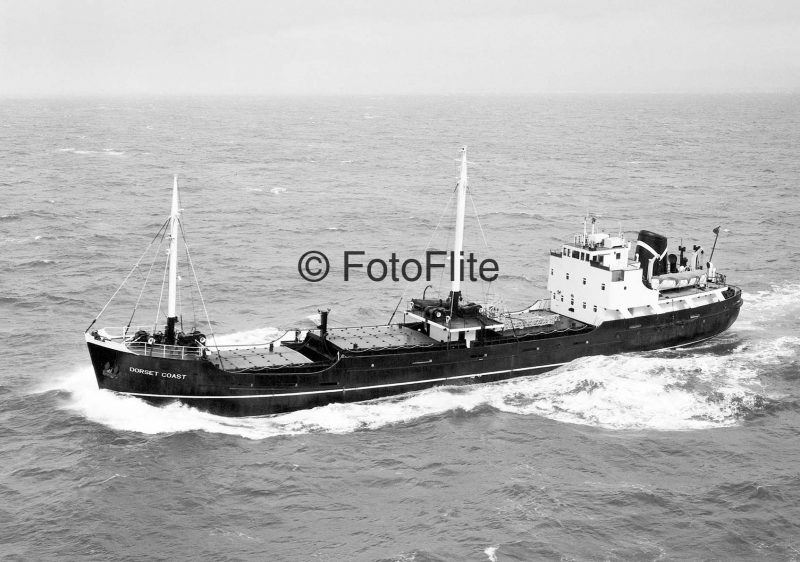
In 1955, the Coast Lines empire reached a peak of 110 ships, composed of fourteen passenger ships, sixteen cattle ships, fifty liner coasters and thirty coastal tramps, owned by the Group and its many subsidiaries. Three years later, the steam coasters of William Sloan & Co. Ltd. were taken over. Four old steam coasters from the 1920s, Beauly, Brora, Endrick and Orchy, with black funnels and a central white band, went to the breakers within a year, and six motor coasters were transferred into the company service from Glasgow to Dublin, Belfast and the Bristol Channel between 1958 and 1965, renamed as Fruin, Tay, Deveron, Forth, Talisker, and Kelvin. Bulk oil storage tanks had by now been acquired at the Group Liverpool dock estate to store mineral and vegetable oils, and to improve the operation.
Link Line
Link Line was begun by Coast Lines in early 1958 from Liverpool to Belfast in an effort to counter the very successful ro-ro and container service that the Atlantic Steam Navigation Co. Ltd. had offered from Preston to Larne since May 1948 using war built tank landing craft. Lorries, trailed containers, and all manner of project cargo that could fit on a low loader were transported across the Irish Sea under the banner of ‘Transport Ferry Service’. This service increased in frequency from twice weekly to daily in two years, with unit loads even including travelling circuses and similar attractions such as Jonah the whale!
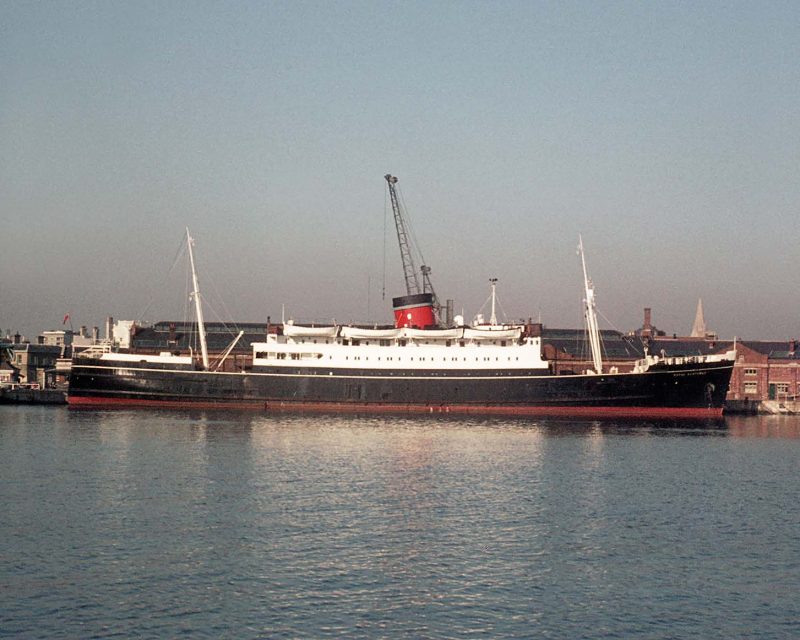
The Coast Lines Liverpool to Belfast service was also running at full capacity, and a radical rethink was needed to enter the container and ro-ro trades. Group Managing Director Arnet Robinson announced in September 1958 that two recently built motor coasters from the Zillah Shipping Co. Ltd. fleet, Birchfield and Brentfield, were to be sent for conversion at a cost of £28,000 each into unit load and container ships. They entered service on 12th January 1959 as Pointer and Spaniel respectively. A shed was erected at a cost of £20,000 on land near the Belfast Steamship Co. Ltd. offices at Belfast, and a similar depot was built at Liverpool, each depot served by a 25 tonne Butters crane. The Belfast crane was leased from the Belfast Harbour Commissioners and its cost was repaid by the Group over ten years, whereas the Liverpool crane was owned by the Group.
The containers used were of the light alloy Duramin variety, with non insulated containers costing £500 and insulated ones costing twice that amount in 1959. Two new container ships were ordered in March 1960 for completion in 1961/62 as Bison and Buffalo at the Bristol yard of Charles Hill & Sons Ltd. and Ardrossan Dockyard Ltd. respectively. Link Line Ltd. had originally been set up in 1920 and amended Articles of Association were adopted in 1958. The funnel colours were black with a corruption of the white chevron of Coast Lines, which instead became a green chevron with a red centre. The houseflag was yellow and black quarters with a black ‘L’ in each of the two yellow quarters, and was the signalling flag for ‘L’, in the same way that the Coast Lines houseflag of 1937 became the signalling flag for ‘C’.
There was also a Liverpool to Londonderry service via Portrush, and an express Manchester to Belfast service. Extra tonnage was introduced on the Ardrossan to Belfast service capable of carrying containers, lorries, flats, trailers and unit loads of all description, and three road haulage firms were acquired between 1959 and 1964 to complete these pioneering services that co-ordinated road and sea transport.
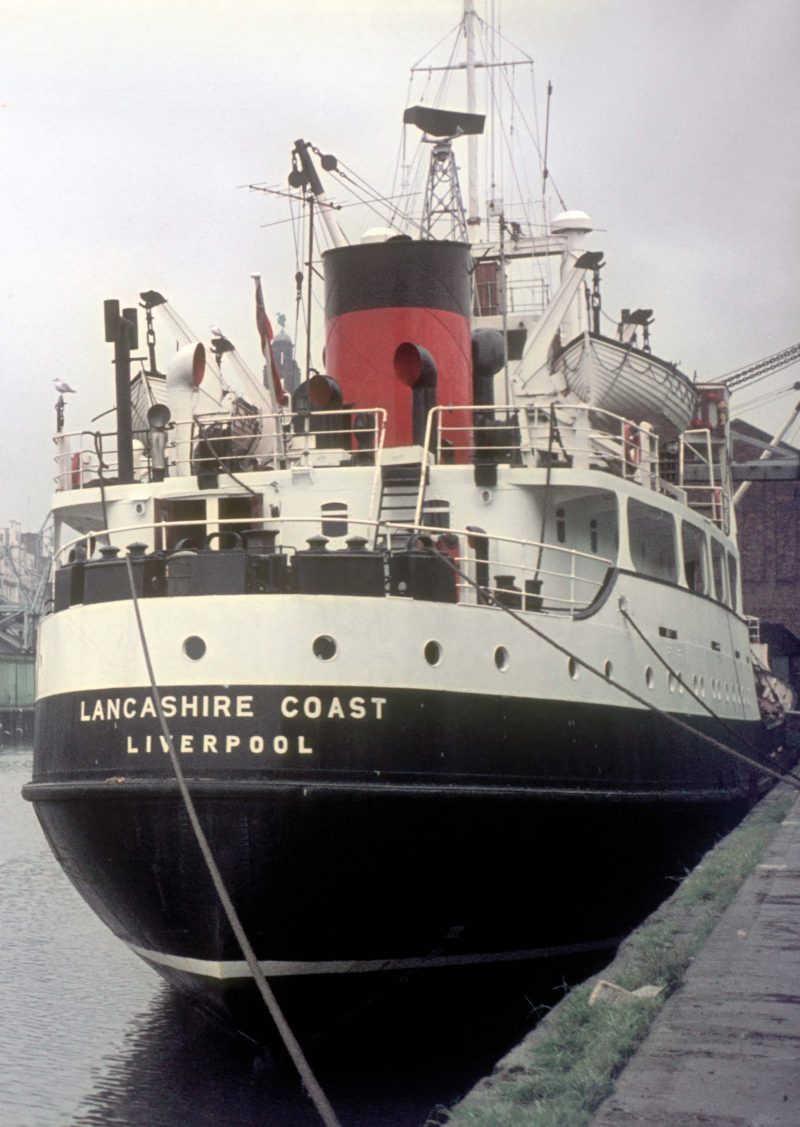
Decline And Fall Of Empire
The last coastal acquisition was the seven ship fleet of the North of Scotland, Orkney & Shetland Shipping Co. Ltd., which had been formed under other names as long ago as 1790, and had services from Leith, Aberdeen and Scrabster to the Northern Isles. Coast Lines paid £2.88 per share for this northern coastal empire, and the Aberdeen Steam Navigation Co. Ltd. was merged into this empire from November 1963. Hadrian Coast was transferred to the Coast Lines fleet, and the Aberdeen Wharf in London transferred to the Tyne-Tees Steam Shipping Co. Ltd., managers of Hadrian Coast. Group dividends were running at 7% during the late 1950s, but it seemed that as soon as Coast Lines stopped acquiring companies its decline and fall was to be rapid, mainly due to competition as well as the huge increase in the British road haulage industry that clogged all of the British motorways and roads from this time.
The goodwill of the Clyde Shipping Co. Ltd. trade from Belfast to London was acquired in 1961 for £15,000, no ships being involved. The Irish Road Ferry Service Ltd. was set up in 1961 and was a renaming of the former Dundalk and Newry Steam Packet Co. Ltd. The road haulage firm of Ulster Ferry Transport Ltd. was acquired in 1962 for £352,000, and the similar Anglo-Irish Transport Ltd. was acquired two years later. The sale of the British and Irish Steam Packet Co. Ltd. to the Irish Government in 1965 marked the start of the end for Group passenger services on the Irish Sea.
In 1960, Tyne-Tees Steam Shipping Co. Ltd., with a fleet of thirteen coasters trading to the Continent, formed a new company, Eurofreight Ltd., to operate express container services to Europe in conjunction with Group member John Forman Ltd. A capital investment of £20,000 was made in plant, and the Dent’s Wharf at Middlesbrough was purchased for £281,984 from T. Roddam Dent & Sons Ltd., and updated with a crane of sufficient capacity to handle containers. Services were run from Newcastle Quayside and Hillgate Wharf at Gateshead, as well as Sunderland and Middlesbrough to London, Hamburg, Bremen, Rotterdam, Amsterdam, Dordrecht, Antwerp, Ghent, Dunkirk, Calais, Boulogne, Le Havre, Cherbourg and Channel Islands ports. Two new motor coasters, Netherlands Coast of 1953 and Yorkshire Coast of October 1959, joined the fleet, and steam disappeared from the Tyneside fleet with the sale in January 1963 of the coal burner Northumbrian Coast for breaking up at Dunston on Tyne. The fleet was gradually reduced to five coasters in 1967 with this fleet mostly sold off in 1968 leaving only Yorkshire Coast and Stormont to carry on until 1972. Stormont made her last voyage on these Continental services from Newcastle in 1976.
The need for bunker coal for Group vessels on the Irish Sea also disappeared in 1963 with the sale of the last two steam coasters, Ulster Herdsman of 1923 and Glengariff of 1936, although the latter had been converted to oil firing. The Group Irish coal interests had been sold in 1951 for £150,000 to Cawood, Wharton & Co. Ltd. based in Harrogate. A guarantee was also obtained at that time regarding the future carriage of coal to Eire and Northern Ireland on ships of the company and its subsidiaries. The Group coal interests in Eire included Tedcastle, McCormick & Co. Ltd. and the Dublin General Steam Shipping Co. Ltd., which were also joint owners of all of the shares in Michael Murphy Ltd. of Dublin. Coal Distributors Ltd. was formed in 1973 with the Dublin General Steam Shipping Co. Ltd. absorbed into Tedcastle, McCormick & Co. Ltd. Cawoods later formed Cawoods (Northern Ireland) Ltd. for imports of coal into Ulster by merging three long established coal importers, and their new motor coaster Craigmore was introduced to the Blyth to Northern Ireland trade in 1966.
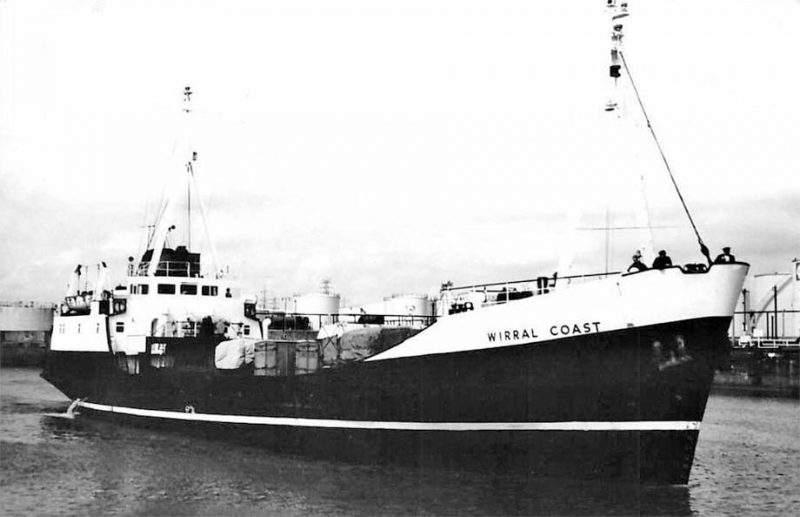
The last conventional coaster for Coast Lines was Wirral Coast of 881 grt in September 1962, completed by Cammell, Laird & Co. Ltd., and she was to spend almost all of her career on the Link Line service. The last conventional coaster built at the Group owned Ardrossan Dockyard Ltd. was Dorset Coast of 1,225 grt in May 1959, and she was converted into a full container ship in 1966. The Ardrossan Dockyard Ltd. was then sold in May 1962 to Blake, Barclay & Co. Ltd., shiprepairers of Greenock. A Danish coaster was purchased on 21st March 1963 for £110,000 and renamed Terrier for use on Link Line unit load services, her hatch covers and coamings were later modified at a cost of £21,000.
The decline of the Coast Lines fleet in the 1960s was just as dramatic as the rise of the fleet had been in the inter-war years. The run down in the liner services of both the Tyne-Tees and Channel Islands subsidiaries was dramatic from 1965, and their fleets virtually ceased to exist at the end of 1968. This left only the parent company, Belfast Steamship Co. Ltd., and Burns and Laird Lines, Link Line, and the passenger and cargo services to Orkney and Shetland. The long running seamen’s strike of 1966 was estimated to have cost the Group around £0.75 million, with a better offer and settlement from their employers not forthcoming until these big losses had mounted up. It was decided as a consequence of this, to switch the Channel Islands traffic of the British Channel Islands Shipping Co. Ltd. to a unit load service via Newhaven from March 1967. This made a satisfactory start with general cargo and unit loads of 150 tonnes per week, and the British Channel Islands Shipping Co. Ltd. was wound up in May 1968, with the traffic switched to and the company later acquired by the Commodore Shipping Co. Ltd. of Guernsey.
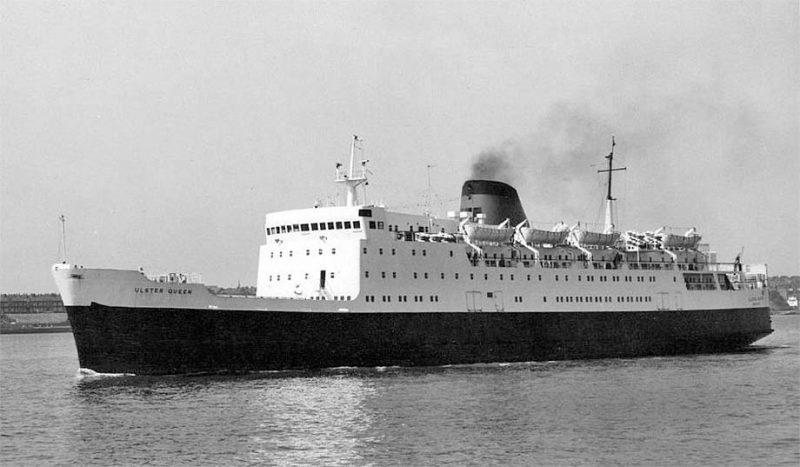
In the years from 1967, the size of the Coast Lines fleet was drastically cut down by the sale of ships, with at least four ships chartered out to other shipping companies such as Prince Line and T. & J. Brocklebank. At the end of 1969, Link Line was amalgamated with Ulster Ferry Transport Ltd. under the new name of Ulster Ferry Link Line Ltd., effective from 1st January 1970. By 1970, the Group fleet was down to 25 ships of which nine were operating on North of Scotland and East coast to Continent services. The remaining sixteen ships on the Irish Sea consisted of three passenger ships in Ulster Prince and Ulster Queen of 1967 on Belfast to Liverpool service of the Belfast Steamship Co. Ltd., and the new Lion of 1967 on the Ardrossan to Belfast service of Burns and Laird Lines. Lairdsglen was the only cattle carrier, two purpose built and six converted Zillah Shipping coasters operated on Link Line routes, and four surviving coasters with ‘Coast’ names were left in the fleet, most of which operated with Link Line. Lancashire Coast of 1954 was converted into a cattle and cargo carrier in 1969 with her masts removed.

A small number of the former conventional Irish Sea services had not been converted to the new modes of freight transport, both insulated and non insulated e.g. to the Isle of Man, but even this route was to be converted soon afterwards, as the Isle of Man Steam Packet Co. Ltd. chartered Spaniel for three months from July 1973 and then purchased and renamed her Conister. The cost of new shoreside equipment and special ships often proved prohibitive, but all cargo to and from the ports was now moved by road haulage, and the mix of shipping and road haulage had been an essential strategy of Coast Lines. However, the company was much reduced in size and was greatly at risk from predatory take-over offers, with the P. & O. Steam Navigation Co. Ltd. offering £5.6 million in deferred stock in February 1971. This was accepted by the Coast Lines directors, and made much sense from the P. & O. perspective as they wished to join the Coast Lines Irish Sea services to the Thames, East Coast and Continental services of their long established General Steam Navigation Co. Ltd., fully controlled from 1920. Coast Lines could have continued quite happily as an independent coastal shipping company, but would have become smaller and smaller as time wore on with the inevitable result of liquidation. After 1971, Coast Lines and the General Steam Navigation Co. Ltd. disappeared into the P. & O. European and Air Transport Division, and then into the realms of maritime history.
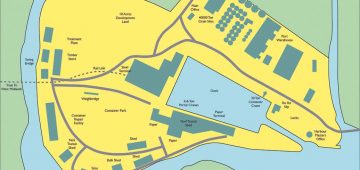



Comments
Sorry, comments are closed for this item